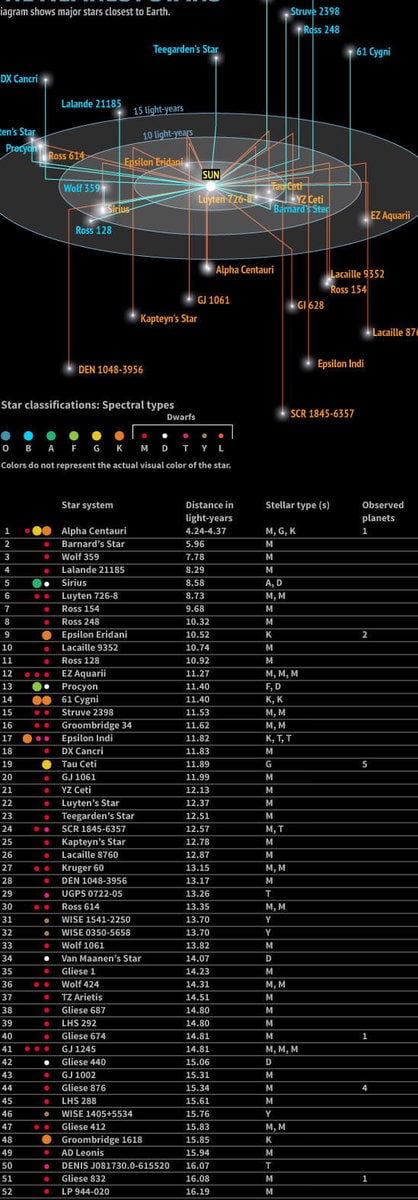The nearest star to Earth is Proxima Centauri, also known as Alpha Centauri C. It is located in the Centauri constellation. The distance from our Solar System to Proxima Centauri is approximately 4,243 light-years. The name “Proxima” comes from Latin and means “near” or “closer to.” Additionally, Proxima Centauri is only 0.237 light-years away from the Alpha Centauri AB system.
Proxima Centauri is believed to be the third star in the Alpha Centauri AB system, but it has a very long orbital period of up to 500,000 years. This red dwarf star is too dim to be seen without the aid of a telescope and has a magnitude of 11.05. It was first discovered by Robert Innes in 1915.
Proxima Centauri is a member of the flaring star class, which are variable stars that experience random increases in brightness as a result of magnetic activity. This phenomenon also results in the emission of X-rays. Proxima Centauri has a mass that is 1/8th that of the Sun and a diameter that is 1/7th that of the Sun.
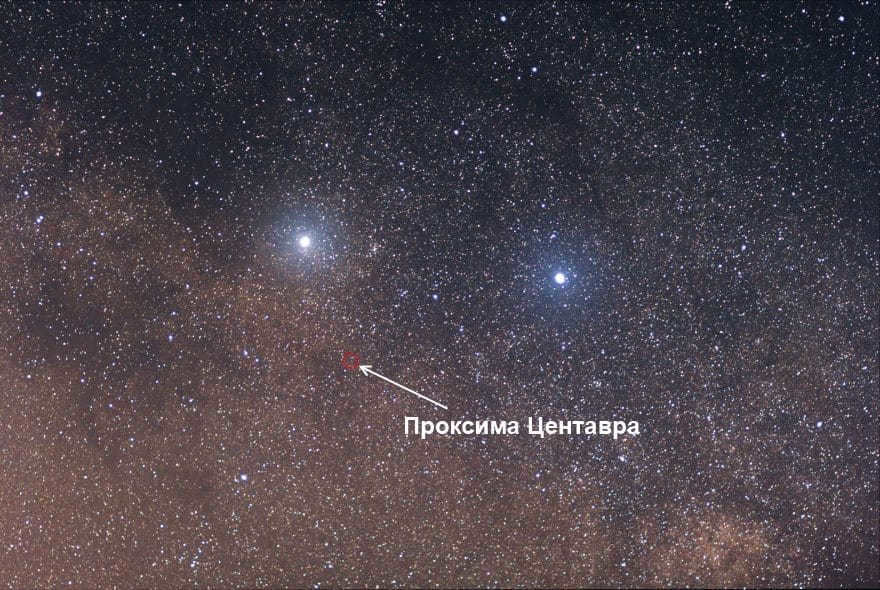
Proxima Centauri is slowly emitting energy, so it will remain in its main-sequence phase for the next 4 trillion years, which is 300 times longer than the current age of the Universe. You can admire pictures of this star taken by the Hubble Space Telescope, or utilize our star map to locate Proxima Centauri in the night sky.
Scientists predict that eventually Proxima Centauri will begin to cool down and shrink in size, causing it to transition from a red hue to a blue hue. During this time, its brightness will increase to 2.5% of the brightness of the Sun. Once the hydrogen fuel in its core is depleted, Proxima Centauri will transform into a white dwarf.
Observers living south of 27°N can observe this star. A telescope with a minimum diameter of 3.1 inches and optimal viewing conditions will be necessary.
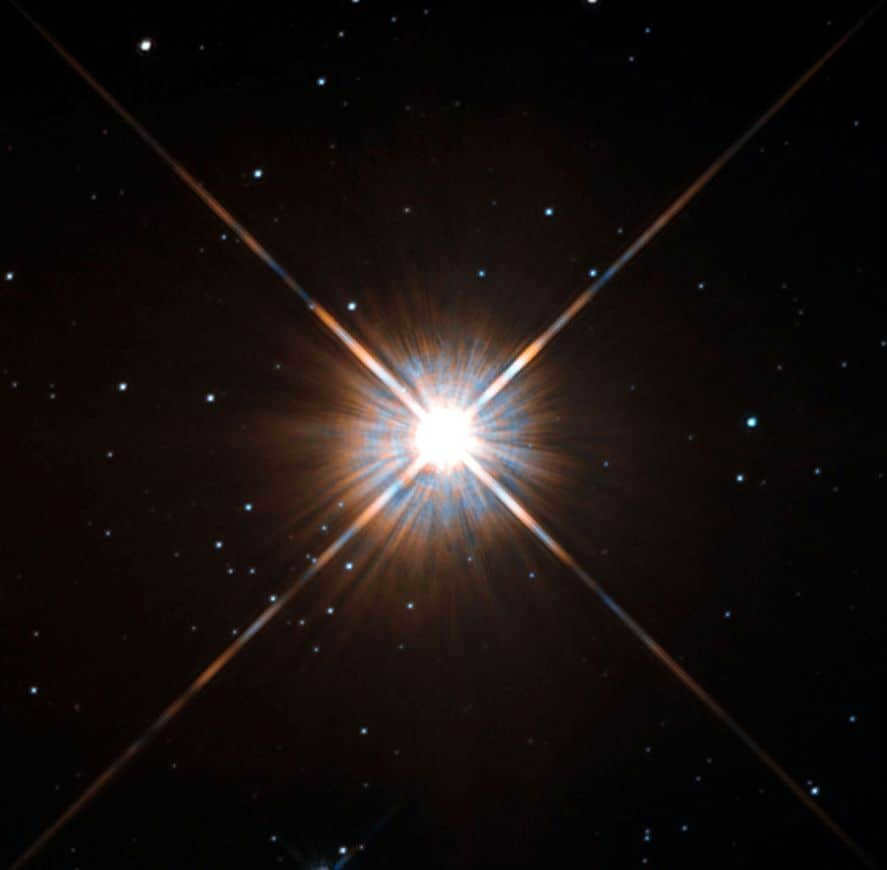
Proxima Centauri has been regarded as the nearest star to the Sun for the past 32,000 years and will maintain this position for an additional 33,000 years. Afterward, it will be replaced by the star Ross 248, a red dwarf located in the Andromeda constellation.
For individuals residing in northern latitudes, the closest star to Earth appears to be Barnard, a red dwarf in the Serpentine constellation. However, if we are searching for the nearest star visible to the naked eye, it is Sirius, which is situated 8.6 light years away.
Proxima Centauri is located 271,000 astronomical units (4.22 light-years) from us. It is closer to us than the Alpha Centauri AB system, which is 4.35 light-years away from our solar system.
When we talk about vast distances, we can look at the Voyager 1 spacecraft as an example. It is currently moving at a speed of 17.3 kilometers per second, which is faster than a speeding bullet. If it were to set its course for the star Proxima Centauri, it would take a staggering 73,000 years to complete the journey. However, if somehow it could reach the speed of light, the travel time would be significantly reduced to just 4.22 years.
The distance between our Solar System and Proxima Centauri was calculated using the parallax method. This involved scientists measuring the position of the star in relation to other stars in the sky. They then repeated the measurement six months later when the Earth was on the opposite side of its orbit. It is worth noting that despite Proxima Centauri being the closest star to us, there is a possibility of there being undiscovered brown dwarfs between us and the star.
Interesting Information
Back in 1915, the renowned astronomer Robert Innes made an incredible discovery. He stumbled upon a star called Proxima Centauri and observed that it had a similar movement to the star Alpha Centauri.
Two years later, in 1917, John Voyut utilized a trigonometric measurement known as parallax and determined that Proxima Centauri was approximately the same distance from Earth as the Alpha Centauri double system. Then, in 1928, Harold Alden applied the same method and made an astonishing revelation – Proxima Centauri was actually closer to us, with a parallax reading of 0.783''.
Fast forward to 1951, when the brilliant astrophysicist Harlow Shapley noticed something intriguing about Proxima Centauri – it had a flaring nature. By comparing it to archival images, scientists discovered that its magnitude had increased by 8%. This remarkable finding solidified Proxima Centauri’s status as the most active flaring star.
Proxima Centauri is classified as an M5.5 star, specifically a red dwarf star with a remarkably low mass. As a result, it has a convective interior where helium circulates throughout the star instead of collecting in its core.
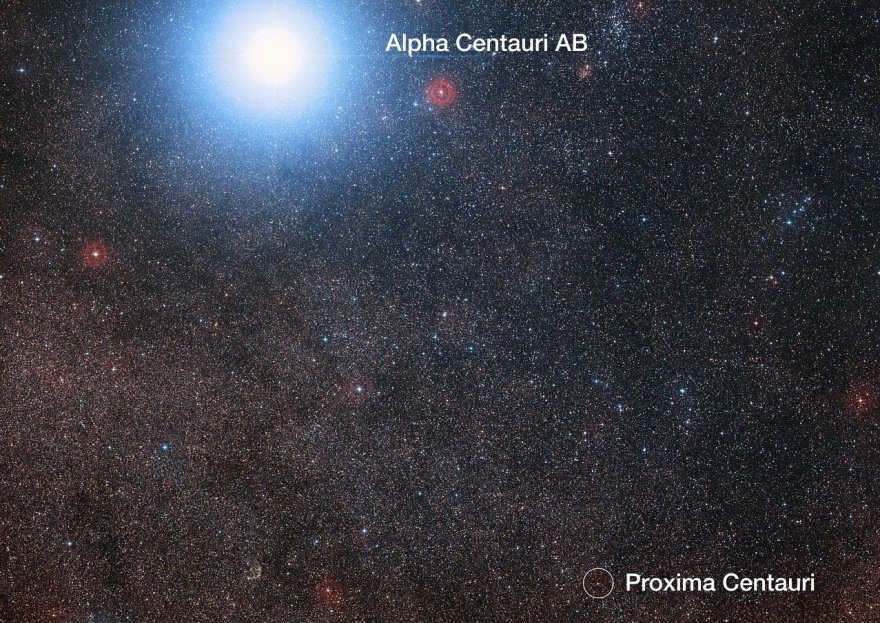
Stellar flares can reach sizes comparable to the star itself, with temperatures soaring to 27 million K, generating X-rays. In terms of brightness, Proxima Centauri only emits 0.17% of the Sun’s luminosity, has a diameter that is 1/7th of the Sun’s, and is approximately 1.5 times larger than Jupiter.
Proxima Centauri has a mass that is 12.3% of the Sun’s and its surface temperature reaches 3500 K. The star will make its closest approach to the Sun in 26700 years, reducing the distance between them to 3.11 light-years. If we were observing the Sun from the position of Proxima Centauri, we would see the bright star within the constellation Cassiopeia. The apparent magnitude of the star is 0.4.
Alpha Centauri C
Proxima Centauri is a part of the Alpha Centauri AB system and is located 0.21 light-years away from the other stars. Additionally, it takes approximately 500,000 years for Proxima Centauri to complete an orbit around its companion star. It is highly likely that there is a gravitational connection between these two stars.
When a low-mass star is attracted to a more massive double system within a star cluster, it forms a three-component system in the Centauri constellation. Alpha Centauri and Proxima Centauri exhibit a common proper motion, along with triple, double, and single stars. This observation suggests that all of these stars have the potential to form a moving group of stars.
Physical characteristics and orbit
- Proxima Centauri
- Located in the Centauri constellation.
- Belongs to the spectral class M5.5 Ve.
- Coordinates: 14h 29m 42.9487c (right ascension), -62° 40' 46.141" (declination).
- Distance from Earth: 4.243 light-years.
- Visible magnitude (V): 11.05.
- Visible magnitude (J): 5.35.
- Absolute magnitude: 15.49.
- Luminosity: 0.0017 times that of the Sun.
- Mass: 0.123 times that of the Sun.
- Radius: 0.141 times that of the Sun.
- Temperature: 3042 K.
- Surface density: 5.20.
- Rotation period: 83.5 days.
- Rotational velocity: 2.7 km/s.
- Other names: Proxima Centauri, Alpha Centauri C, CCDM J14396-6050C, GCTP 3278.00, GJ 551, HIP 70890, LFT 1110, LHS 49, LPM 526, LTT 5721, NLTT 37460, V645 Centauri.
To test your friends’ knowledge, you can inquire about the nearest star. Many will immediately mention Betelgeuse or Sirius. However, there’s a twist. While it’s true that the Sun is the closest star to Earth (at a distance of 150 million kilometers), which star is closest to the Sun?
Alpha Centauri, which is located 4.37 light-years away, is the third brightest star. However, it’s not a single entity but a triple system. Firstly, we observe a pair of stars orbiting a common center of gravity every 80 years. Star A is brighter than the Sun, while Star B is slightly dimmer. The third member of the system is Proxima Centauri. Remember this name, as it holds the title for the closest star to our solar system, at a distance of 4.24 light-years.
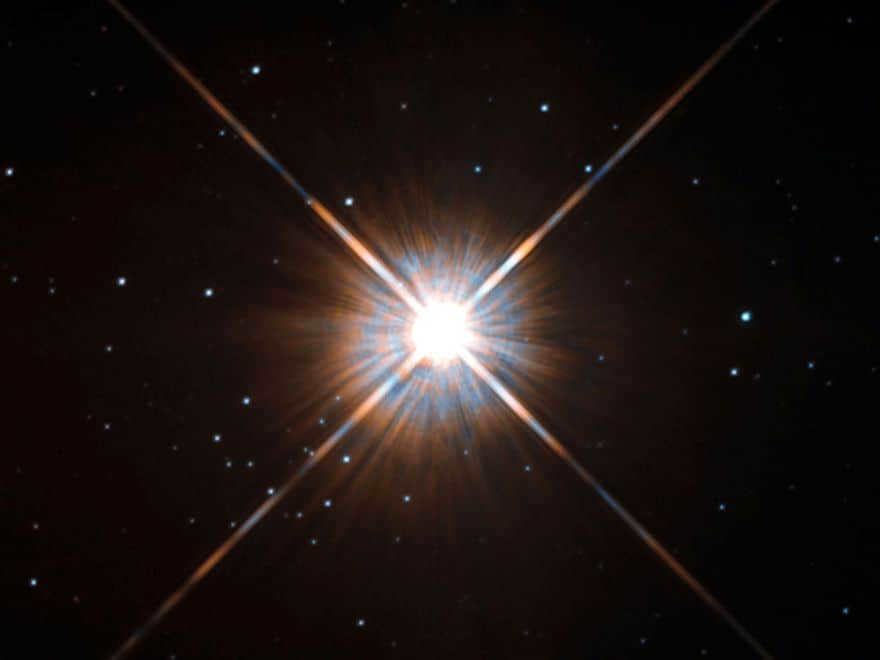
The Proxima Centauri system is located in the Centauri constellation, which is only visible from the southern hemisphere. However, even from that vantage point, the star itself is not visible to the naked eye due to its faintness. Observing Proxima Centauri requires powerful equipment. To put the vastness of the distance into perspective, it would take the spacecraft New Horizons approximately 78,000 years to reach Proxima Centauri.
Proxima Centauri has held the title of the closest star for the past 32,000 years and will retain that position for another 33,000 years. After that, its distance will decrease to 3.11 light-years after approximately 26,700 years. Subsequently, Ross 248 will become the closest star.
The Nearest Star to the Sun in the Northern Hemisphere
When considering the northern hemisphere, the star closest to the Sun is Barnard’s star, which belongs to the red dwarf category and is located in the Serpentor constellation. However, it is relatively faint and cannot be seen with the naked eye. If we only consider celestial objects that can be observed without the aid of technology, the closest star would be Sirius, which is located 8.6 light years away. Sirius is twice as large and massive as the Sun.
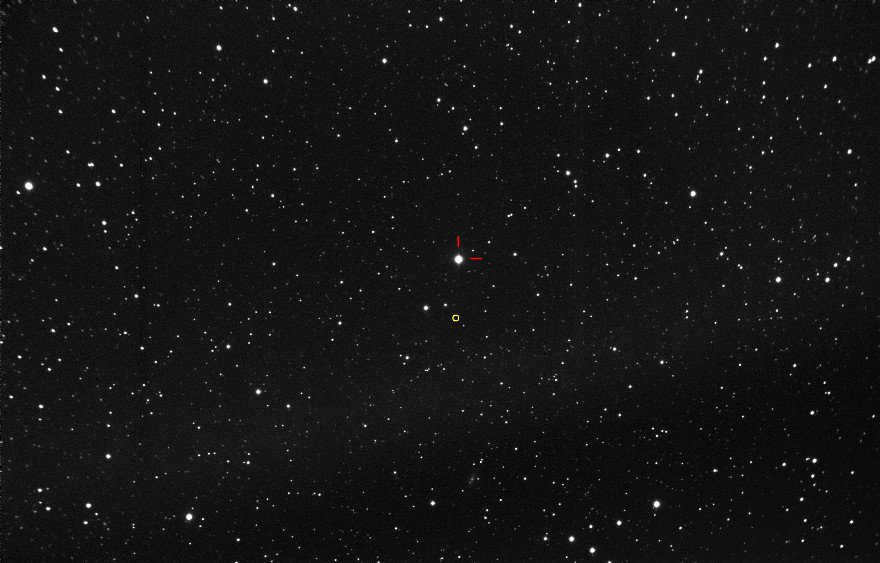

How do scientists measure the distances to the closest stars?
Scientists use a method called parallax to determine the distances to stars. What does that mean? Well, try this: stretch out your arm and point your finger at a distant object. Now, close one eye and then the other. You’ll notice that the object appears to shift its position. That’s what parallax is.
To calculate the distance to a star, scientists observe its position when our planet is in one part of its orbit (usually during the summer), and then they wait six months until our planet is on the opposite side of its orbit. They measure the angle between the star and another object, and using this data, they can calculate the star’s distance. This method works for any object within 100 light years from Earth. Here is a list of the closest stars to the Sun, along with descriptions and their distances.
There are a total of 45 stars located approximately 17 light years away from our solar system. Within our galaxy, there exists an astonishing number of 200 billion stellar celestial entities. Certain stars possess such a low luminosity that they remain undetectable without the aid of a highly advanced telescope, typically available exclusively to professional observatories.
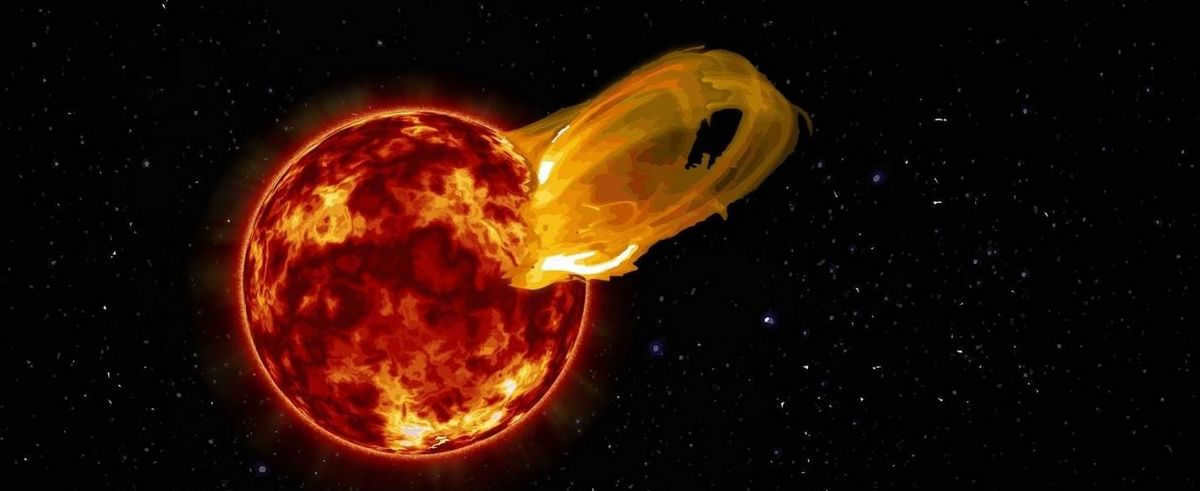
The Alpha Centauri star system is home to Proxima Centauri, the nearest star to the Sun. Its name is derived from the Latin word “proxima,” meaning “nearest.” Proxima Centauri is situated at a distance of 4.2 light years from Earth, which is equivalent to 270 times the distance between Earth and the Sun. With a diameter seven times smaller than that of the Sun and a mass eight times smaller than our own star, this red dwarf is truly unique.
The Discovery of History
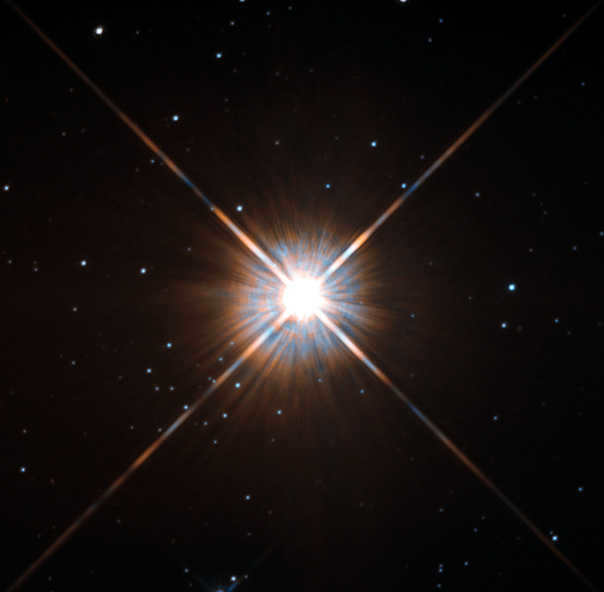
Proxima Centauri is the nearest star to the Sun, but it went unnoticed for a considerable period of time, as the attention was focused on its brighter neighbor, Alpha Centauri, which is easily visible in the southern sky.
Proxima Centauri was first observed by the Scottish astronomer Robert Innes in 1915. While studying photographs taken at the Johannesburg Observatory in South Africa, Innes noticed a faint star in close proximity to Alpha Centauri.
In 1917, the Dutch astronomer Joan Voigt accurately measured the parallax of Proxima Centauri and determined that it is closer to the Sun than Alpha Centauri.
Proxima Centauri and the Sun are approximately the same age.
Spectral classification
Despite being in close proximity to Earth, Proxima Centauri has an apparent magnitude of 11m, making it too dim to be visible to the naked eye from the surface of our planet.
Proxima is categorized as a red dwarf or M-dwarf, and it is one of the smallest known stars in the universe. If it were slightly smaller, the hydrogen in its core would not have enough pressure to undergo nuclear fusion and it would be classified as a brown dwarf.
In order for Proxima Centauri to be visible to the naked eye from Earth, it would need to be at least 100 times brighter.
Flash activity
Rephrase the text, making it unique, using the English language and preserving HTML markup:
Flash activity
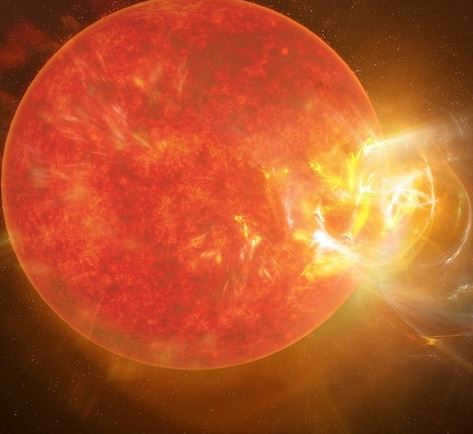

In the year 1951, an American astronomer named Harlow Shapley compared a series of photographs taken of Proxima Centauri over an extended period of time and made an interesting observation. In approximately 8% of the images, the star exhibited a noticeable increase in its brightness.
It has since been discovered that Proxima Centauri is a star prone to flaring. During these flares, the star’s brightness can increase significantly in both the optical and X-ray spectrums.
In 1980, astronomers at the NEAO-2 observatory meticulously documented the energy curve of Proxima Centauri’s X-ray emissions. Subsequent investigations into flare activity were conducted using the EXOSAT and ROSAT satellites.
In 1995, the flares were observed by the Japanese satellite ASCA. Subsequently, various X-ray observatories, such as Chandra and XMM-Newton, have conducted research on Proxima Centauri.
A superflare occurred on Proxima in 2019, during which the star reached a peak brightness 14,000 times greater in the UV range and 1,000 times greater in the millimeter-wave range. The duration of the flash was 7 seconds.
Interestingly, the increase in optical radiation was much smaller (only 0.9% brighter) and occurred approximately one minute after the start of the flash.
This occurrence of superflashes in red dwarfs is unprecedented. It is possible that astronomers have stumbled upon a completely novel phenomenon that requires further investigation.
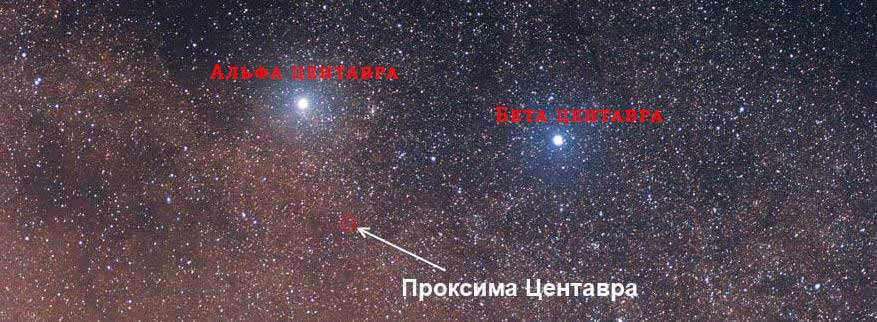
The motion vectors of Proxima Centauri align with the motion vectors of Alpha Centauri A and Alpha Centauri B, resulting in the formation of a unified system. Proxima Centauri orbits the pair A and B.
Here are the orbital parameters of Proxima Centauri:
| Parameters | Values |
| Major semi-axis | 9100 a.u. |
| Orbital eccentricity | 0.421 |
| Period | 591 thousand years |
| Inclination | 108.2° |
After 300 years, the angular separation between Proxima Centauri and Alpha Centauri will diminish by a quarter to ½ degree for Earth-based observers.
Proxima Centauri is situated 4.22 light-years away from Earth, which is 0.13 light-years shorter than the distance to Alpha Centauri AB. The Voyager 1 spacecraft, which moves faster than a speeding bullet (17.3 km/s), could potentially reach Proxima Centauri in 73,000 years. However, if it were to travel at the speed of light, the journey time would be reduced to a mere 4.22 years.
Observations of the celestial body
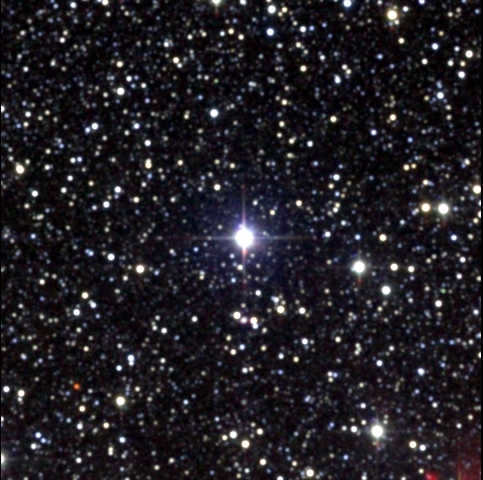
Proxima Centauri has a significant southern declination, making it observable only from locations south of 27°N on the Earth’s surface. This star emits a faint yellow light that is not visible to the naked eye.
In order to successfully observe Proxima Centauri, three requirements must be met:
- A telescope with a minimum aperture of 8 cm.
- An optimal dark sky.
- The star must be positioned high above the horizon.
Even from the stars Alpha Centauri A and Alpha Centauri B, Proxima Centauri can be seen as a fifth magnitude star.
Proxima Centauri B
Back in 1998, the spectrograph of the Hubble Space Telescope made a fascinating discovery – a planet situated at a distance of 0.5 astronomical units (equivalent to 7.5 million kilometers) from Proxima. Fast forward to 2016, and the European Southern Observatory validated the earlier findings by confirming the presence of a planet resembling Earth in the habitable zone of Proxima Centauri. This remarkable discovery prompted the planet to be officially named Proxima Centauri B.
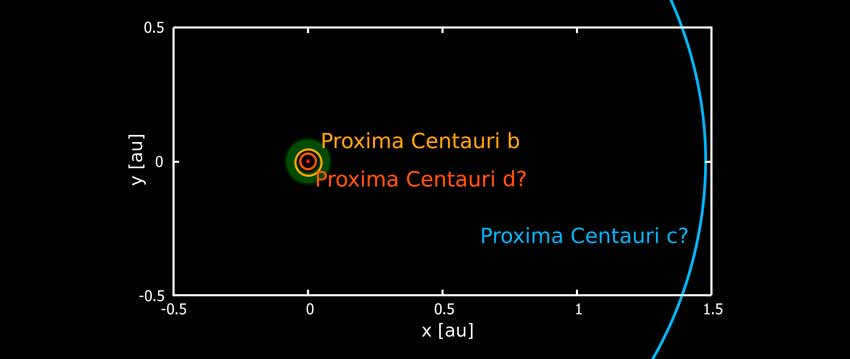
An examination of Proxima Centauri B was conducted in 2020, using the ESPRESSO spectrograph. The investigation revealed that this celestial body has an orbital period of 11.2 days in relation to Earth. The estimated surface temperature of Proxima Centauri B is -234 °C. Additionally, the mass of planet B is at least 1.17 times greater than Earth’s mass.
Proxima Centauri C
A planet called Proxima Centauri C was discovered by astronomers at the Turin Observatory in 2019. It has a mass of 5.8 ± 1.9 Earth masses and orbits at a major semi-axis of 1.5 a.u. (220 million km). The planet takes approximately 1900 days (about 5.2 years) to complete one orbit around Proxima Centauri in an elliptical path. Being located far away from its parent star, this super-Earth is situated well beyond the habitable zone.
Proxima Centauri D
During the observation of the central star using the SPRESSO spectrograph, scientists have discovered a third planet in the telescope that has a very close orbit to its parent star – 10 times closer than the distance between Mercury and the Sun. This newly found planet has been officially named “Proxima Centauri D”.
The mass of this recently discovered planet is equivalent to 26% of Earth’s mass, and its radius is 81% of Earth’s radius. To put it into perspective, this celestial body is twice as heavy as Mars. A year on Proxima Centauri D lasts for 5.15 Earth days.
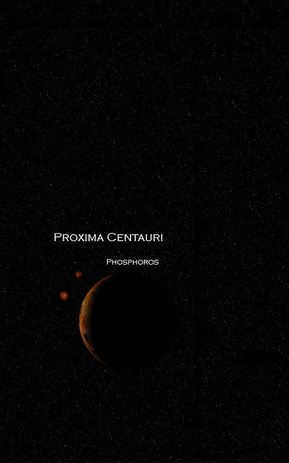
The planets Proxima Centauri B, C, and D are approximately the same size as Earth, however, it is improbable that life exists on them. Planet C is situated too far from the star and bears a closer resemblance to an icy Neptune rather than a habitable Earth.
Planets B and D encounter a distinct predicament. Being in close proximity to the star, they are subject to tidal forces and are permanently locked in a state where one side always faces the star, much like the Moon does to the Earth.
The illuminated side is perpetually too hot, while the unilluminated side remains incredibly cold. Temperature variations could potentially be alleviated by the presence of an atmosphere that retains heat, however, astronomers are uncertain of its existence.
Planets B and D face another challenge in the form of occasional intense flares emanating from their central star. These powerful bursts of ultraviolet and X-ray radiation bombard the planets, resulting in their sterilization and rendering them inhospitable for life. Additionally, the strong stellar winds and coronal emissions carry away the planets’ atmosphere and water into space.
To mitigate this harmful impact, a strong magnetic field could offer protection for these planets. However, the existence of such a magnetic field remains unproven and unconfirmed by scientists.
Therefore, in order for planets B and D to become potentially habitable, they would require a robust atmosphere and a magnetic field capable of deflecting the lethal radiation emitted by their small yet volatile central star.
Questions – answers
Proxima Centauri, a red dwarf, has a remarkably long lifespan of up to 100 billion years, as these types of stars burn fuel at a very slow rate. In contrast, the Sun is projected to only last for 12 billion years.
For the past 32 thousand years, Proxima Centauri has held the title of being the closest star to the Sun. It will retain this position for another consecutive 33 thousand years, until it is replaced by the red dwarf Ross 248, which is situated in the Andromeda constellation.
In due course, Proxima Centauri will gradually cool down and decrease in size. Its color will shift from red to blue, and its brightness will increase to 2.5% of the Sun’s brightness. Once the hydrogen fuel in its core is depleted, Proxima Centauri will transform into a white dwarf.
Despite the intense radiation emitted by the central star, is it possible for the planets of Proxima Centauri to be habitable?
There is a small chance that planet B could support life. Scientists from France have found evidence of a potential liquid ocean on the planet. If there is water present, it is possible that life could exist.
The surface temperature of this celestial body is believed to be around 2800 °C.
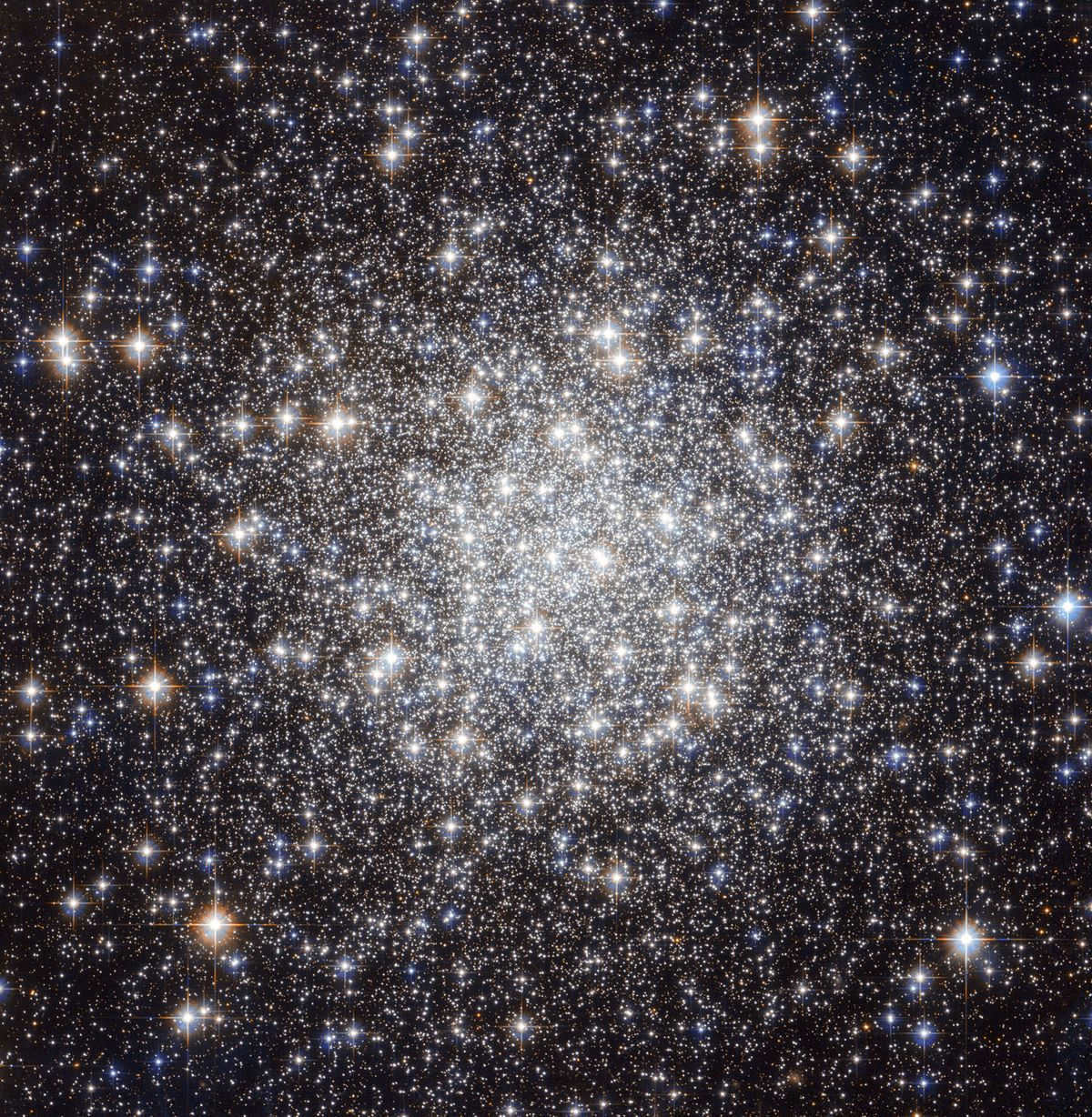

The spectacle of the starry firmament holds a captivating sway over countless denizens of the planet. The effulgent dots of radiance encircling Earth exhibit a wide range of luminosity and magnitude.
What exactly are these celestial bodies?
Stars are cosmic entities that originate from the compression of the nuclei of a high-mass, high-density molecular gas cloud. Predominantly comprised of hydrogen and helium particles, these elements gravitate towards one another, ultimately giving rise to a dense mass within the gas cloud.
As the particles within this mass continue to condense, the temperature escalates. Once it surpasses 9.9 million degrees Celsius, a nuclear reaction ensues, thereby culminating in the birth of a star.
Upon gazing at the heavens unaided, one can discern the stars belonging to the three closest galaxies:

The Trilateral Shape

Only powerful telescopes can detect the other stars.
The nearest to Earth
The observable Universe contains approximately 10 trillion stars. Out of these, around 200-400 billion stars belong to the Milky Way. The Sun stands out as the closest and brightest star in relation to Earth.
Proxima Centauri
| Constellation | Alpha Centauri |
| Distance from Earth | 4.24 light-years or 1.295 pc. |
| Spectral class | M5.5Ve |
| Existence of exoplanets | 1 |

The star is moving towards Earth at a speed of 22.2 kilometers per second. In approximately 26,700 years, it will be located at a distance of 3.11 light-years from us. Proxima Centauri is significantly less bright than the Sun, with a brightness that is 500 times lower. It can only be observed in the southern hemisphere.
Barnard
| Constellation | Serpens |
| Distance from Earth | 5.96 light-years or 1.828 parsecs |
| Spectral classification | M4Ve |
| Existence of exoplanets | 1 |
Discovered in 1916 by the English astronomer Edward Emerson, Barnard is classified as a brown dwarf star. It can only be seen through a telescope. Due to its exceptionally high angular velocity, this star is often referred to as a “runaway.” Over a span of 174 years, it has shifted 0.5 degrees in the celestial sphere.
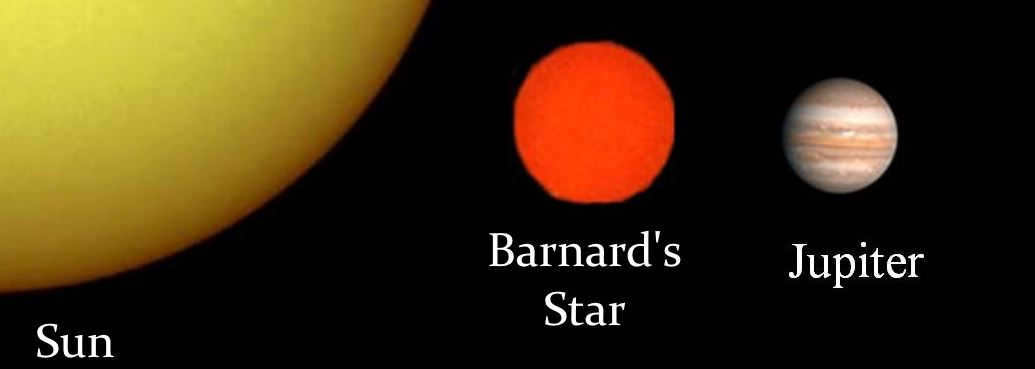
Scientists estimate that Barnard is between 8 and 12 billion years old, making it one of the oldest stars in the Milky Way. This makes it three times older than the Sun. Despite its age, Barnard is relatively small, with a mass of only 17% and a radius that is 20% of the Sun’s. It has a slow axial rotation period of 130.4 days.
Luman 16
| Constellation | Sail |
| Distance from Earth | 6.516 light-years or 1.998 pc. |
| Spectral classification | A-LB, B-L9/T1 |
Discovered by American astronomer Kevin Luhman in 2013, Luman 16 is the third most distant star from Earth. It is a binary star system composed of two brown dwarfs, Luhman 16A and Luhman 16B. When observed with the naked eye, they appear as a single object in the sky.
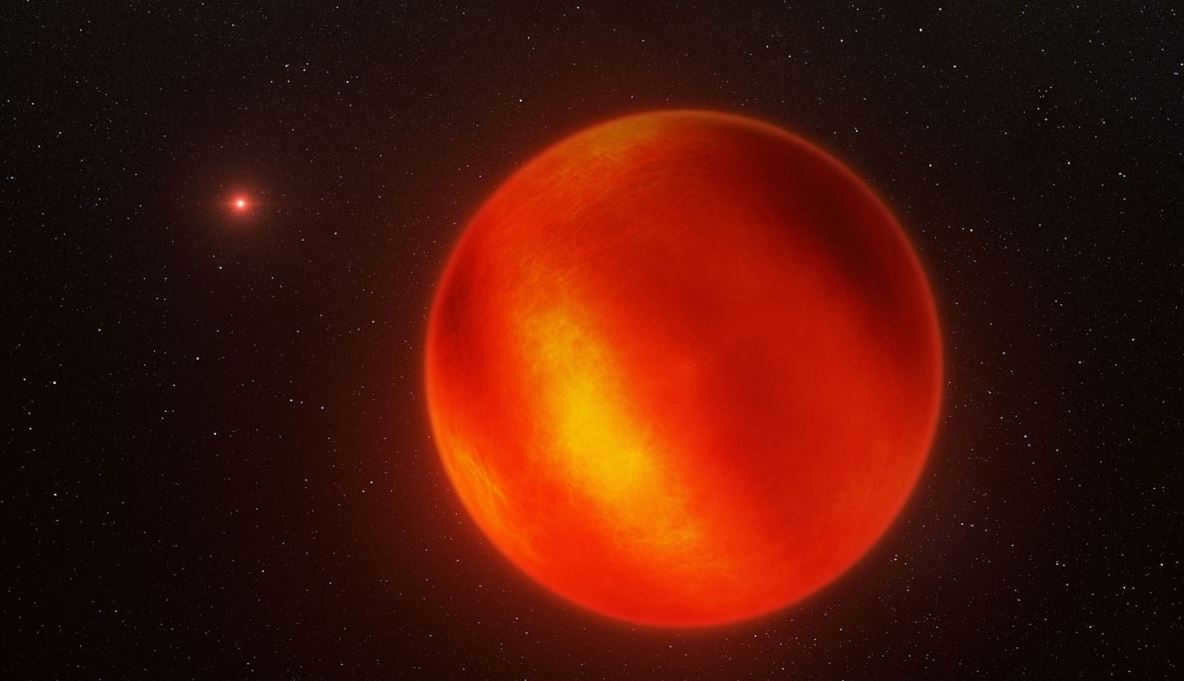
The star, known as Luhman 16AB, is classified as a binary object. Its first component has a mass equivalent to 0.4-0.5 times that of the Sun, while the second component’s mass ranges from 0.3-0.5. The Luhman 16 system’s brown dwarfs revolve around a shared center of mass. These stars have an age of approximately 600-800 million years.
| Star System | Leo |
| Distance from Earth | 7.78 light years 2.4 pc |
| Spectral classification | MBV |
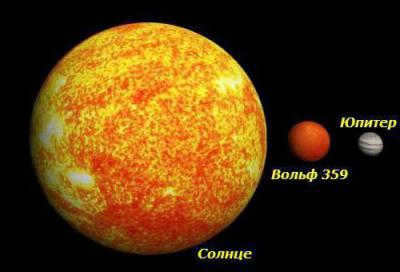
In 1918, the German astronomer Max Wolf made a groundbreaking discovery of a singular star. This particular star falls into the classification of brown dwarf stars.
Visible only through the aid of a telescope, Wolf 359 is a diminutive star with a mass amounting to a mere 10% of the Sun’s mass, and a radius of just 16%.
With an age surpassing 100 million years, Wolf 359 exhibits periodic variations in luminosity, creating the illusion of it flaring and fading.
Scientists have observed that Wolf 359 possesses an outer atmospheric shell that bears a striking resemblance to the Sun’s corona.
Laland 21185
| Star Group | Ursa Major |
| Distance from our Planet | 8 light years |
| Spectral classification | M2,1 Ve |
| Existence of planets outside our Solar System | 3-4 |
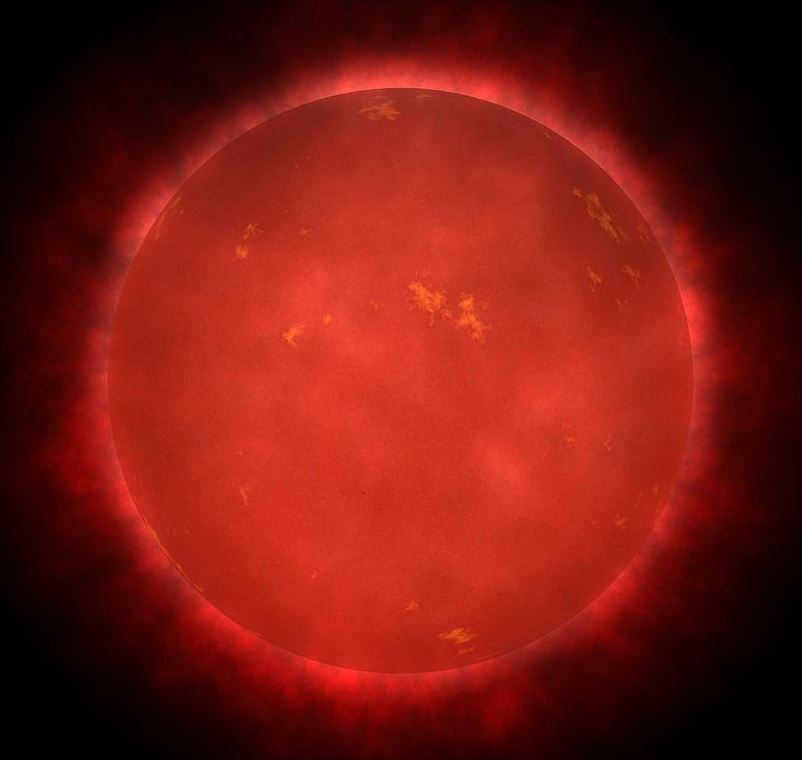
The discovery of this star dates back to 1801 when the renowned French astronomer Gerard de Lalande first observed it, hence the name. It falls into the category of red dwarfs and stands out as a solitary star with sporadic flares. Its mass is approximately 0.46 times that of the Sun, while its radius amounts to 0.393 times the same value.
Lalande is known to host a planetary system consisting of three exoplanets:
In approximately 19,900 years, Lalande 21185 will reach its closest proximity to Earth, at a distance of 4.65 light-years or 1.43 parsecs.
| Constellation | Big Dog |
| Distance to Earth | 8.6 light years or 2.6 pc. |
| Spectral class | A1V, DA2 |
Sirius is a highly visible star in both the Northern and Southern Hemispheres. In Russia, it can be observed in the southern part of the sky during the winter months. With a luminosity 25 times greater than the Sun, Sirius is one of the brightest stars. It is a double star belonging to the white dwarf class.
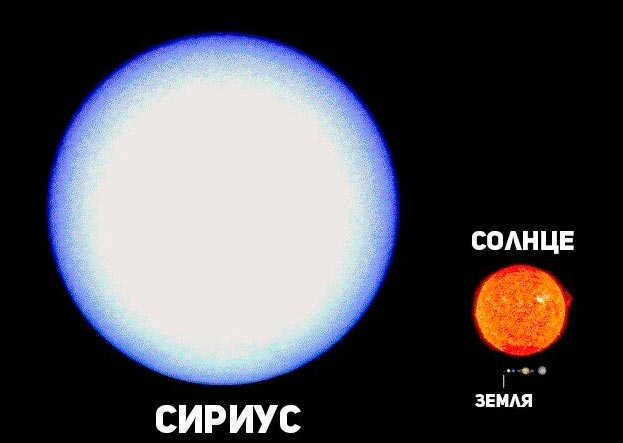
Sirius is estimated to be 200-300 million years old. Long ago, the people of the Nile River Valley revered Sirius as the protector of warriors. According to Maori legends, this star was believed to be the dwelling place of the supreme sacred being, Rehua. Similarly, the inhabitants of New Zealand associated Sirius with Antares.
Leiten 726-B
| Constellation | Whale |
| Distance to Earth | 8.73 light years |
| Spectral class | M5.5Ve, M6Ve |
The American-Dutch astronomer Jacob Leiten discovered the binary star in 1948 and it was subsequently named after him.
Leiten 726-B is composed of two companion stars:
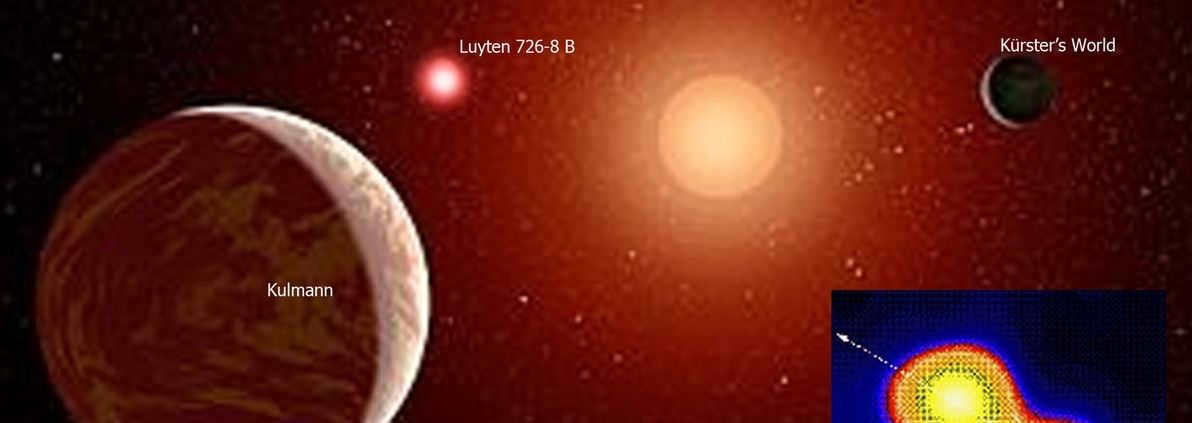
The second star was discovered at a later time than the first and is more active. Both stars are classified as red dwarf stars. Each star has a mass that is 10% of the Sun’s mass and a radius that is 14% of the Sun’s radius. They have the same level of brightness. The stars orbit a common center every 26.5 years. Lethein is a star that frequently erupts, with its most intense eruption being recorded in 1952.
Ross 154
| Constellation | Sagittarius |
| Distance to Earth | 9.7 light years |
| Spectral class | M3.5Ve |
The solitary star was first observed in 1925 by American astronomer Frank Elmar Ross, who gave it its name. This star is approximately one billion years old and falls into the classification of red dwarf stars.
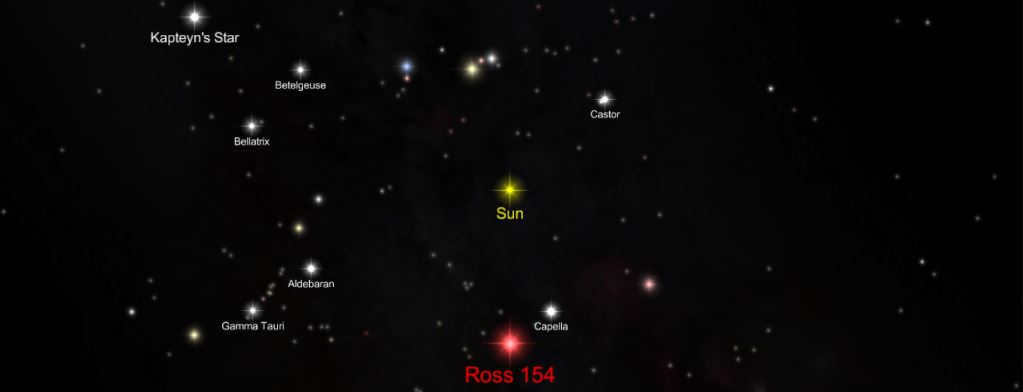
Various science fiction works have made references to the star Ross 154. With a mass equivalent to 17% of the Sun and a radius of 24%, Ross 154 exhibits a significantly more intense X-ray emission than our own Sun.
| The constellation | Andromeda |
| Distance to Earth | 10.3 light years |
| Spectral class | M5.5Ve |
American astronomer Frank Elmore Ross discovered the singular star in 1925 and it was subsequently named after him. The star undergoes changes in its brightness every 4.2 years and 120 days. It is smaller than the Sun by a factor of 2, and its mass is 40% of the Sun’s mass. The star can only be observed in the sky with the use of a telescope.
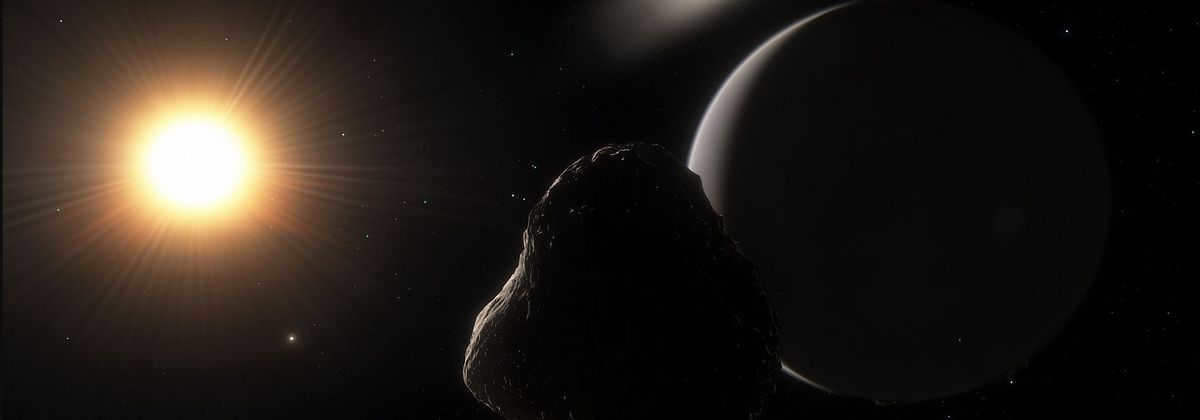
In approximately 30,000 years, the star known as Ross 248 will become the nearest star to the Sun. After another 40,000 years, the distance between Ross 248 and Earth will be 3.02 light years. This particular star has been referenced in various works of science fiction.
Epsilon Eridanus
| Constellation | Eridana |
| Distance to Earth | 10.5 light years |
| Spectral class | K2V |
| Presence of exoplanets | 2 |
Epsilon Eridanus is visible in the night sky without the need for a telescope from almost anywhere on Earth, except for areas north of 80 degrees north latitude. This star exhibits intense magnetic activity and is considerably more active than our Sun.
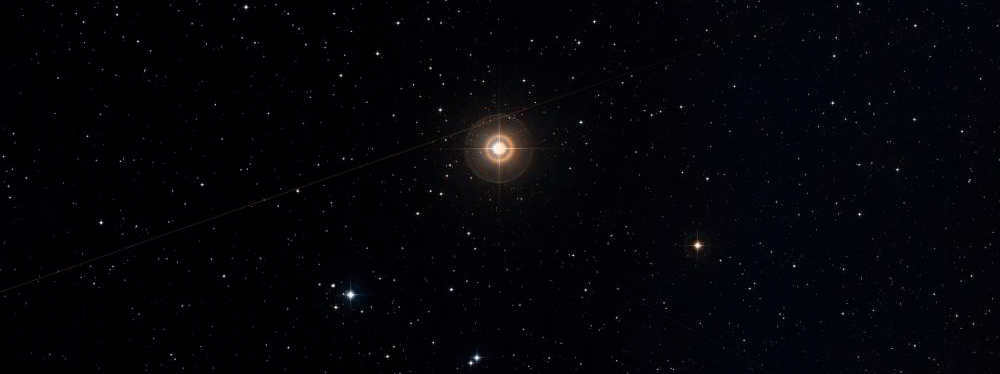
This particular star has been in existence for more than a billion years and was first identified in 1988. Similar to our own Sun, it also possesses its own system of planets. In terms of mass, it is approximately 85% that of the Sun, and its radius is equivalent as well.
Laikal 9352.
| The star cluster | Southern Pisces. |
| Distance from Earth | 10 light-years |
| Spectral category | M1.5Ve. |
Discovered by French astronomer Nicola de Louis Laicale in the 18th century, Laicale 9352 is a solitary star that falls under the group of red dwarf stars. There is limited research on Laicale 9352 and it is believed to lack a planetary system. It has a mass and radius that are 47% of the comparable measurements of the Sun.
Questions-Answers
An exoplanet can be described as a planet that exists outside of our solar system.
Brown dwarfs are celestial objects that fall in between stars and planets in terms of size. They lack the necessary conditions to initiate nuclear fusion.
Stars emit light as a result of a thermonuclear reaction occurring in their core. This reaction allows stars to shine for millions of years.
Within our galaxy, there are approximately 500 billion red dwarf stars. Due to their faintness, they can only be observed in the night sky with the aid of a telescope.
The nearest stars to Earth are situated within a radius of 16 light years.
Watch a video about the nearest stars to our planet
The discovery of the nearest star to our Sun, which was later named Proxima Centauri, was made by Robert Innes in 1915. This star is a red dwarf that can be found within the Alpha Centauri system.
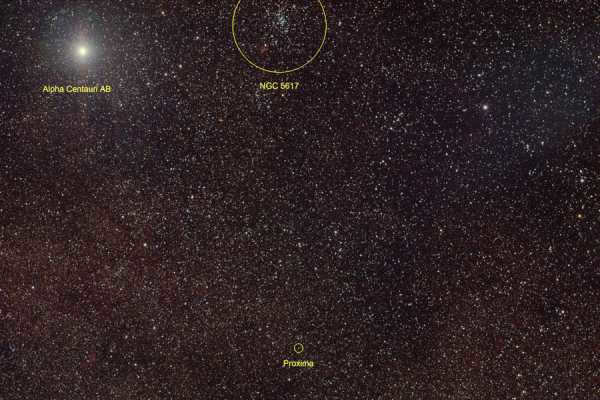
Proxima’s Overview
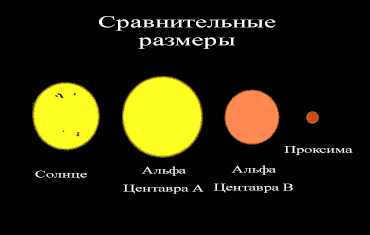
The star has a diameter that is seven times smaller than the diameter of the Sun, and the same is true for its mass. In terms of luminosity, it is only 0.17% of the Sun’s luminosity, or a mere 0.0056% in the visible spectrum. This explains why it cannot be seen with the naked eye and why it was only discovered in the 20th century. The star is located at a distance of 4.22 light-years from the Sun, which, in cosmic terms, is relatively close. This is because even the Sun’s gravity reaches about halfway to this distance. However, for humans, this distance is truly enormous.
Proxima Centauri Distance
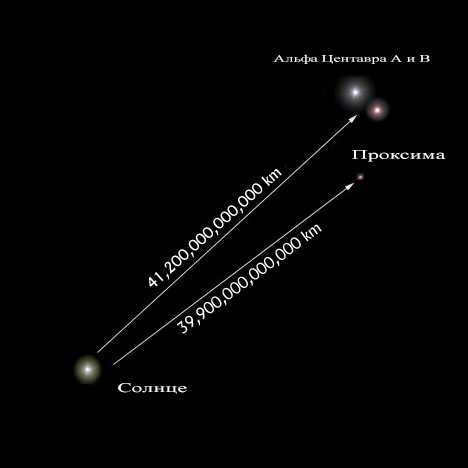
Distance to Proxima in kilometers
Distances on the planetary scale are usually measured in light years, which is the distance that light travels in a vacuum in one year. This value is equivalent to 9.64 trillion kilometers. To put these distances into perspective, let’s consider some examples. The distance from Earth to the Moon is about 1.28 light seconds, and with the help of modern technology, it takes approximately 3 days to travel this distance. When we look at the distances between planets within our own solar system, we see a range from 2.3 light minutes to 5.3 light hours. In other words, the longest journey within our solar system would take just over 10 years if we were to travel in an unmanned spacecraft.
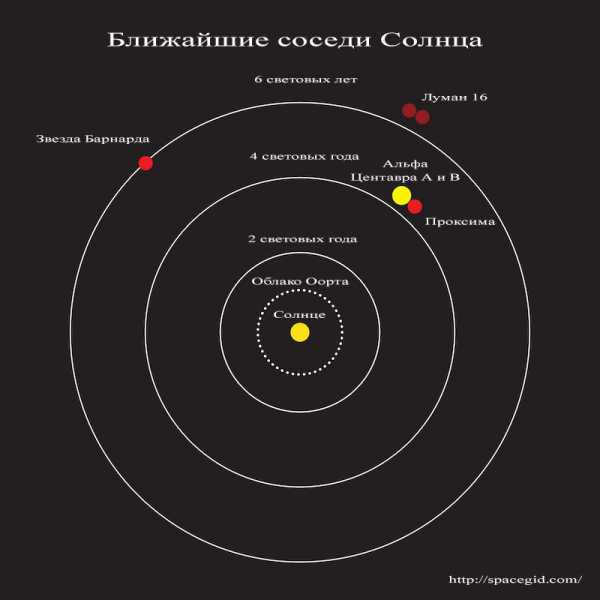
The nearest stars to the Sun
Let’s now contemplate the duration it would take for us to travel to Proxima Centauri. The reigning speed record holder is the Helios 2 unmanned spacecraft. It travels at a speed of 253,000 kilometers per hour, which is equivalent to 0.02334% of the speed of light. Upon calculation, we discover that it would take us 18,000 years to reach the closest star. Unfortunately, given our present technological capabilities, we can only support a spacecraft for 50 years.

